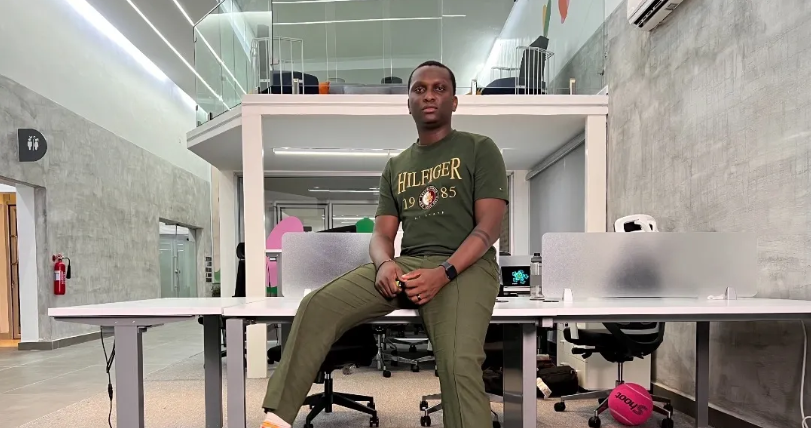Can you imagine a VP of Design that is not a designer? Well, meet Ted.
Ted is the Vice President of Design at Flutterwave, Africa’s most-valued startup. And he has been at the startup for close to six years now!
I’ve known of Ted for over five years, thanks to Twitter where his handle is @ted_lade. His full name is Tobi “Ted” Oladele. But where did the “Ted” come from and is that his actual Government name? This was one of the questions I wanted to ask Ted when I got the chance.
Thankfully, I didn’t have to wait too long. In January 2022, he shared the story behind his new first name, Ted. TL; DR—TED is an acronym of his fuller Yoruba name (Tobi Elijah Damilare).
In startup land, employees don’t stay past two years at one company. I don’t set the rules; ask Carta—an equity management platform used by founders, investors and employees. So, how come we have a startup employee staying for more than five years? This was my next question for Ted.
Fortunately, I got a chance to chat with him last month. Now, I wanted to know more about his growing up, childhood aspirations, entry into tech, career philosophy and of course, his future plans.
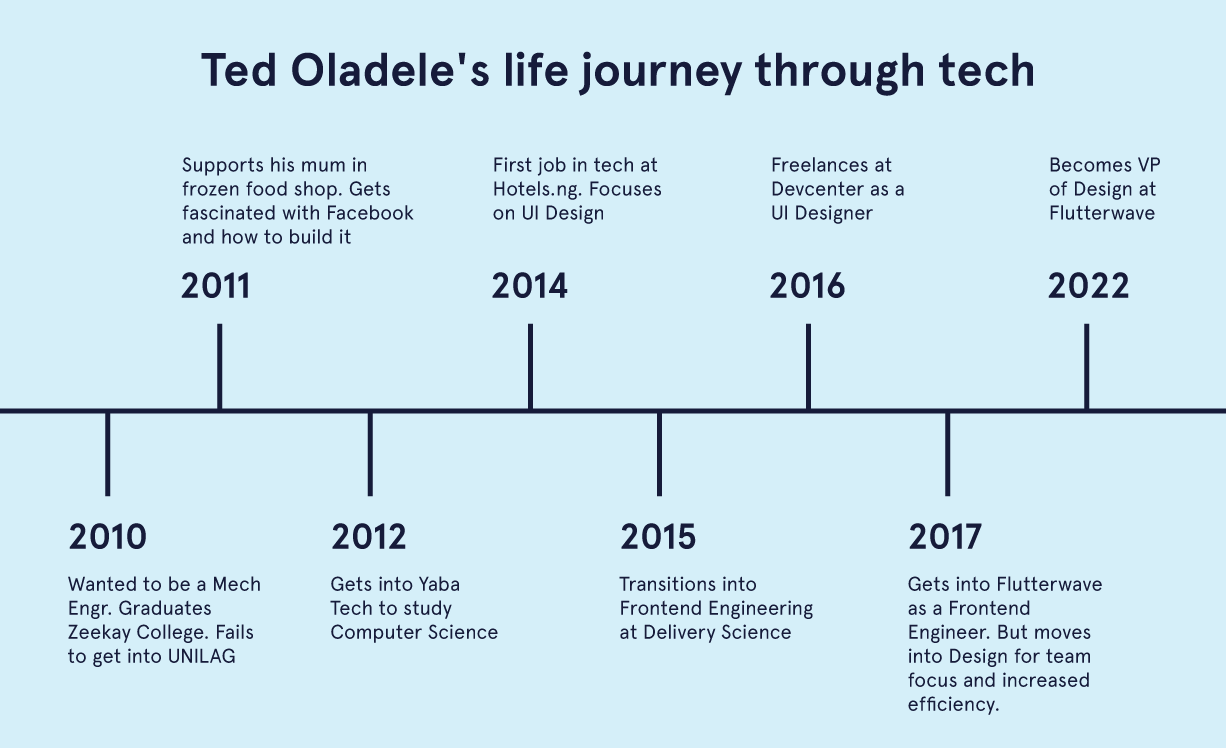
If you are also interested in Ted’s story, keep reading.
Growing up as Tobi in Ikorodu, Lagos
“To start with, my parents are both pastors”, he laughs. His dad was a Mechanical Engineer that used to fix the Hummer jeeps of Dayo “D1” Adeneye and Kehinde “Keke” Ogungbe, godfathers of music broadcasting in Nigeria. Until one day, Tobi’s dad said God called him to be a Pastor and instructed him to drop everything else.
“While my dad is a full-time pastor, my mum runs a business on the side. She sells frozen food to wholesalers and retailers.”
After graduating from high school, Tobi didn’t immediately get into college. So, he spent most of his time at his mum’s shop. Beyond selling fish, Tobi learnt how to code while at the shop. “I was at the shop all of the time, and it was there that I learnt how to code on my phone”, Ted tells me.
Ted is the first of three children, all boys. So, his life’s journey was less influenced by the path of his siblings—if anything, he is his siblings’ inspiration. But he was more influenced by his dad and the ambitious friends in his neighbourhood. One of Tobi’s friends is Dayo—the Nigerian musician better known by his stage name, Zlatan (Ibile). Another of his friends from Ikorodu is Yinka Ash, founder of Ashluxe—a luxury streetwear brand.
Dayo (Zlatan Ibile) and I played football in the neighbourhood. We named him Zlatan together. We are still friends today.
Ted and Yinka were classmates in high school, Zeekay College—situated in Ikorodu. Dayo attended a neighbourhood school, Anchor College which was a five minutes walk from Zeekay. In 2010, Ted graduated from Zeekay, and the journey out of Ikorodu began.
“We always jokingly say that we escaped Ikorodu”, says Ted. Ikorodu is best described as a less developed city on the outskirts of Lagos.
Getting into tech
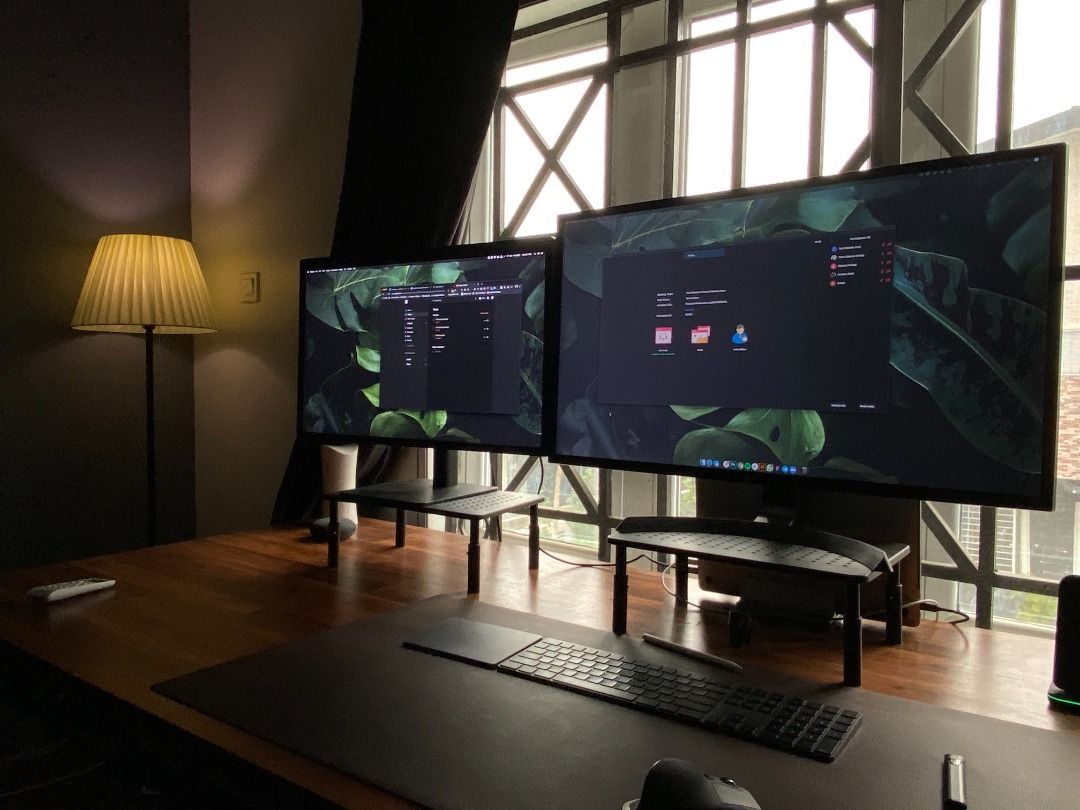
“I wanted to become a mechanical engineer like my dad. But then, I got on Facebook and became more intrigued about building Facebook than fixing cars”, says Ted. “So, I was googling how to build a Facebook on my phone. One of those days, I stumbled on W3Schools—which teaches you how to code, but then, I didn’t have a laptop”.
In my opinion, W3Schools is still the easiest platform to learn to code.
— Ted Oladele
“After trying and failing to get into UNILAG, I opted to study Computer Science at Yaba College of Technology (Yaba Tech). It was when I became a Computer Science student that my parents now got me a mini-laptop.”
So, in 2012, Tobi started at Yaba Tech. But getting a STEM education was only the first step. To get his first tech job, he’d need to network and become present on online discussion forums like Nairaland, Radar by TechCabal (now defunct) and Twitter.
“I messaged Mark Essien (Hotels.ng Founder & CEO) on Twitter. He gave me a task to do and invited me to the office for a brief interview”, says Ted. “He asked me to start that day, which became my first tech job”. So, while still a part-time student in 2014, Ted worked as a User Interface Designer at Hotels.ng. “I would work in the day and go to school in the evening.”
After a couple of months at Hotels.ng, Ted moved to Delivery Science where he became a Frontend Engineer. “There (at Delivery Science) I worked with the likes of Ezra and Ope”.
Ezra Olubi and Opemipo Aikomo left to join Paystack, but Ted did some freelancing work with Devcenter—a hub for devs and those seeking them. Today, Ezra is the CTO and a co-founder at Paystack while Ope Aikomo is a Design Director at Paystack.
Ted would finally meet Ridwan Olalere at a gym in Surulere (close to Yaba), who had worked at Hotels.ng but only knew Ted through his work with Devcenter. Today, Ridwan is the CEO of Lemonade Finance, a cross-border payment app.
Working at Flutterwave and Ted’s work philosophy
Ridwan’s pitch was for Ted to join Flutterwave as a Frontend Developer. It was at this point in our conversation that I asked Ted why he didn’t continue his career as a frontend engineer. This is because there are strong arguments that software engineers earn more than product designers. However, in Ted’s opinion, “they earn the same”.
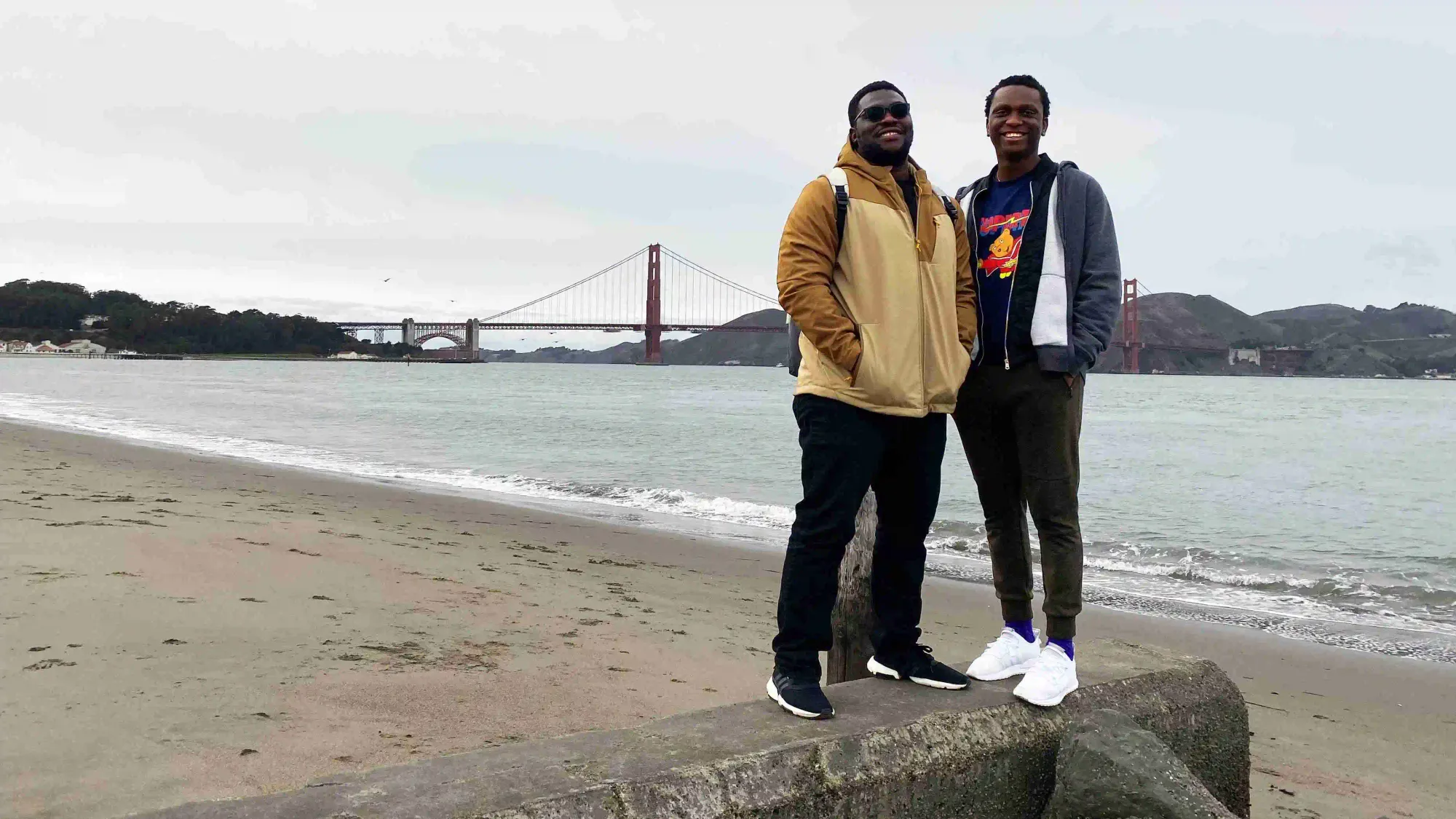
“At the time, Flutterwave didn’t have a standalone design team. And from my work at Delivery Science, I was used to a culture where the frontend engineers did the design“, says Ted. “So, getting to Flutterwave, I started doing that too. But Flutterwave is fast-paced, and I couldn’t keep up with doing both. So, I just tapped my friend, Nosa Obaseki who was good at frontend to handle that entirely while I did the design. Since then, I’ve not had cause to look back. That set-up works.”
Nosa and Ted’s relationship is quite an admirable one. Nosa had also previously worked at Hotels.ng. Fu’ad Lawal captures it nicely in his story on the Flutterwave Store and the people who made them.
Everything Ted designed, Nosa made functional…By 2018, Nosa and Ted had moved in together and were later joined by two other colleagues…They called their apartment Unit 4; there, a true sense of work-life balance didn’t exist–there was only work getting done.
Nosa has been at Flutterwave for two months longer than Ted. Today, Nosa is the Head of Frontend Engineering at Flutterwave.
Expectedly, Ted has gotten job offers from other companies. So, when I asked him why he hadn’t left Flutterwave, he said “I believe I can offer more to Flutterwave than say, an Adyen (a Dutch payment company)”. His response seems to align with the philosophy of a big fish in a small pond, as opposed to being a small fish in a big pond. The twist is that if you grow to become a big fish in a small pond, you tend to expand the size of the pond. And I think that’s what has happened with Ted. When he joined Flutterwave, they were a Seed stage startup about one-year-old. Today, Flutterwave is a growth stage startup valued at $3 billion dollars.
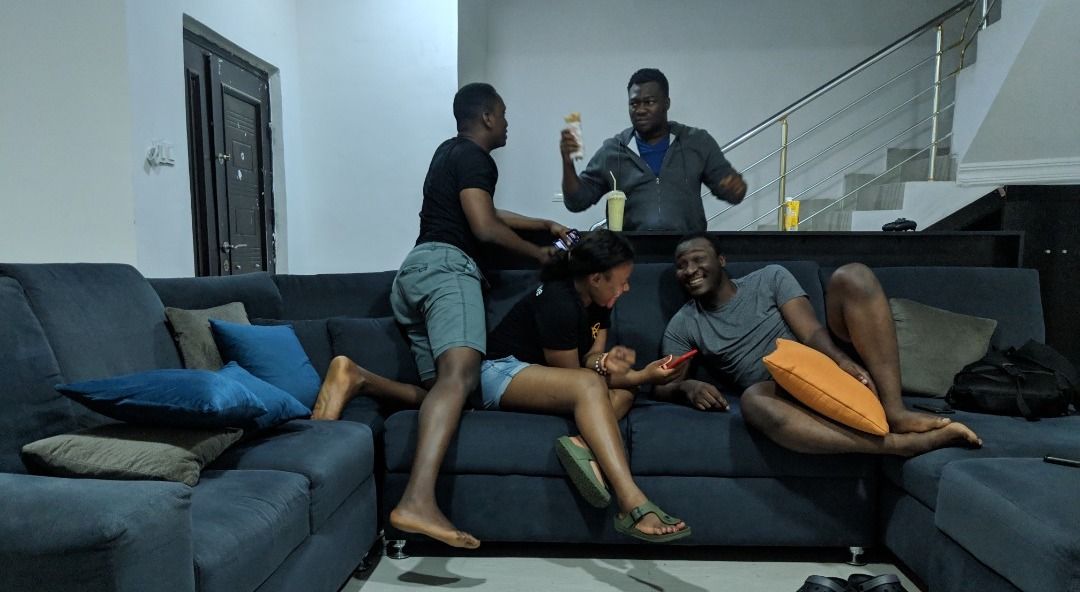
I drilled further into why Ted hasn’t job hopped in a while, and he shared three interesting truths he lives by.
One, hone your skills. He advises that people should hone their skills following a north star, a concept used in startup land. “Hone your skills. Pick one thing. Everybody has the ability to be good at multiple things but find your north star and let that guide what you are doing.” He continues, “if you ask me today about what I do, my response will not be that I’m a designer. I’d say I like building stuff. My foundation already helps me; I can code—which means I understand engineering, I design and I’ve managed product development. Those three skill sets are the things you need to build a product successfully. So, everything I’ve done over the last eight years has led me to where I am today. In my case, my north star is being a builder”.
Two, find a company that aligns with your personal goals, that way you don’t feel like you are working for a company, but like you are working to grow yourself. “This informs how we hire people on the Flutterwave Design Team. I need to make sure that your personal goal and Flutterwave’s goal align. For instance, I aim to build a globally-recognised designed team, and Flutterwave affords me that opportunity and platform”. Speaking of global comparison, the Flutterwave Design team has its own website just like Airbnb and Facebook‘s Design team.
Finally, when your goals and values align with a startup, you can stay long enough to build wealth not just earn a salary. “Most times, people change jobs to get a better salary but if you find a company that cares about your growth all that will be sorted”. Ted makes a case for building a legacy by staying at a company for a long time. “If you look at all the best people in the world today, no one says this is how much the person earns. They say this is how much the person has done. And no matter how you care about money, at someone point you’d stay somewhere. But hey, if you’ve job-hopped three times in the five years I’ve been at Flutterwave; you probably earn more salary than me. But you are not richer, because I’ve stayed at Flutterwave and built wealth.”
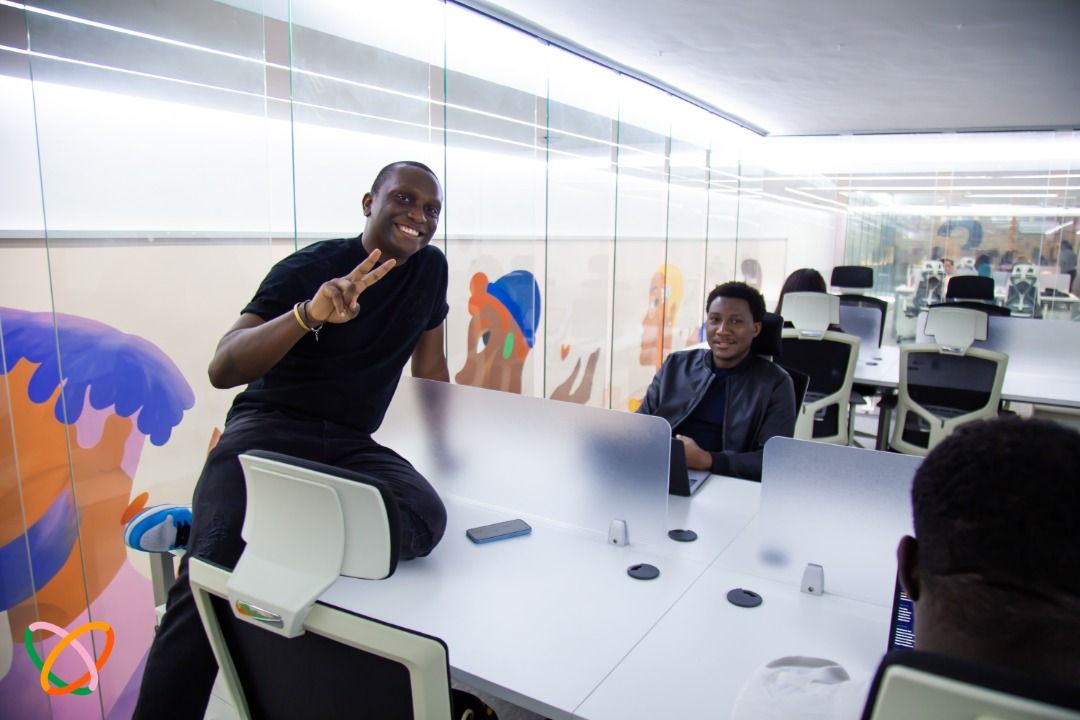
So, what has Ted done at Flutterwave?
“There is hardly anything Flutterwave has launched that I’ve not touched—Dashboard, Barter v3, Flutterwave Store, Flutterwave 3.0“, says Ted. “When I joined, one of the first things I did was redesign the Flutterwave Dashboard. It was called Rave then.”
I remember Rave. I wondered why it was called Rave instead of Flutterwave. This name difference was a mouthful and was confusing to many.
Card funding via Flutterwave/Rave is 2%?
— Benjamin Dada (@DadaBen_) August 27, 2018
I wish the display name was actually Flutterwave, not Rave. So many people on my store haven’t heard of Rave but Flutterwave. Thus they choose Paystack always. I have 0 payment via Rave. More publicity/awareness might help here.
— Engr. Valerie♕ (@wat_a_name) October 23, 2019
But that wasn’t the only problem the platform had.
“It was very ugly”, Ted admits. “Then, we were only signing up incorporated businesses. But then, we reimagined the onboarding process and created something we called individual accounts that allowed anyone with a valid form of ID to signup and accept payment. Of course, this comes with the attending transaction limits. I designed the new onboarding flow for the Flutterwave dashboard, which became the starting point for where we are today.”
This redesign transformed Flutterwave’s appeal to merchants. “We went from 3,000 merchants to over 20,000 merchants in like two months. And that was the beginning of the respect for design at Flutterwave”.
There is a lot to learn from Ted, that I can’t possibly fit into this article but I asked him what’s next, and he said “I don’t know, to be honest. I’ve never wanted to run a company. So, the idea of starting my own is not coming to me. There is still work to be done, and Flutterwave’s story is just beginning—especially when you consider all that has happened.”
Get passive updates on African tech & startups
View and choose the stories to interact with on our WhatsApp Channel
Explore
